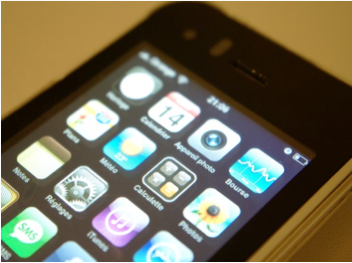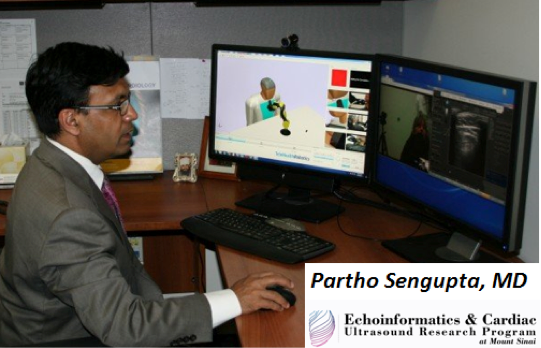Clinical Trial Site Centricity VS Patient Centricity: What’s A More Compatible Model?
With the introduction of mobile health technologies in the field of healthcare, Sponsors and CROs are looking into mHealth to design patient centric clinical trials in order to reduce study visit costs and trial participation burden on patients.
With the introduction of mobile health (mHealth) technologies in the field of healthcare, Sponsors and CROs are looking into mHealth to design patient centric clinical trials in order to reduce study visit costs and trial participation burden on patients. Nonetheless, with mHealth at its infancy, Sponsors and CROs at The Partnerships in Clinical Trials Conference expressed their encounters and challenges with the concept and execution of patient centered clinical trials. This article will evaluate concerns with patient centricity, and conceptualize how site-centered clinical trials may address these concerns, particularly with more complex studies.
Patient Centered Clinical Trials: Works for Some, but, Not All

The concept of patient centric clinical trials (also dubbed siteless trials, remote trials and virtual trials), involves designing study visits in combination with mHealth and telehealth technological capabilities to allow patients to conduct study visits from the convenience of their homes. Subsequently, this convenience can offer benefits to Sponsors, such as reducing study visit costs, and minimizing subject dropout rates.
During a round-table session on this topic led by Kamyar Farahi, Clinical Trials Lead at Janssen, the discussion favored that with the help of telemedicine and virtual technologies, one can potentially reduce the trial visit costs, travel burden to the patient, and potentially improve patient and investigator interactions during the course of a clinical trial.
While this model may work for less complex trials, such as vaccine studies, or trials that require self-administered exams (i.e., mobile blood pressure, mail in blood test kits, urine exams, etc.), the siteless model poses limitations to more complex trials, such as those that require more complex study visit procedures, or study visit procedures that can only be conducted by trained specialists with specialized equipment.
Patient Centric Model: Concerns with Investigators
While siteless models offer benefits towards Sponsors and CROs, study sites are expressing concerns with the model, as principal investigators (PIs) feel they do not have much control over the patient, and they are specifically concerned with accountability (i.e., if a patient is harmed, the PI is ultimately accountable for the patient’s safety). Additionally, with clinical trials being a financially restraining engagement at study sites, siteless models impact study sites, as sites generate less revenue from missing in-person study visits.
The round-table discussion with Farahi also touched on this topic and the consensus was that one of the limitations of site-less clinical trial models could be the impact on the business model of the investigators, but with limited interactions between the patient and the investigator the patients could be less satisfied with his/her participation.
Breakthroughs in Telemedicine Clinical Research
In the field of healthcare, advances in telemedicine are reaching new heights with telerobotics, where highly trained specialists are experimenting with conducting complex medical procedures remotely. Dr. Partho Sengupta of The Icahn School of Medicine at Mount Sinai in New York in collaboration with Rush University Medical Center in Chicago recently initiated a breakthrough clinical trial to evaluate remote telerobotic ultrasound examinations over the Internet. Through his computer in New York, Dr. Sengupta is able to control a robotic ultrasound arm to obtain cardiac echoimages of patients in Chicago.
This capability can be particularly useful in implementing site centric clinical trial models to distribute specialist access to study sites globally. "Launching long-distance, tele-robotic ultrasound exams between two major hospitals in two large cities is a sign that we may be able to make waves in accelerating access to specialists to support global clinical trial site centric models," said Sengupta.

What’s the Difference between Patient Centricity and Site Centricity?
Patient centricity involves conducting clinical trial study visits and providing study measurements directly from the patient and by the patient in the comfort of their own homes and lives. Telehealth and mobile health (i.e., Fitbit, Apple Watch, Scanadu, etc.) technologies enable patients to report their outcomes directly to study sites and Sponsors.
Site centricity involves the process of engaging patients and conducting study visits in local neighborhood clinics or medical centers and allowing physicians to remotely monitor the patients and collect data via telehealth. For example, Novartis partnered with Walgreens to run a 10,000 patient clinical trial pilot, where Walgreens acted as the study site.
Walgreens recently unveiled its patient recruitment services at the Partnerships in Clinical Trials Conference, and may progress towards acting as remote study sites in clinical trials, especially with its specialty pharmacy division, that wields specialized facilities to handle a wide range of disease indications including oncology, cystic fibrosis, multiple sclerosis, rheumatoid arthritis, transplants, and much more.
Is Site Centricity a More Compatible Model than Patient Centricity?
Patient centric models tend to work best with less complex clinical trials and relatively easy data collection methods. However, this model includes limitations for more complex study procedures that require specialized equipment, and expert medical specialists. Moreover, this model may introduce risks with data quality, as patients may not adhere to study regiments, or required data collection methodologies (i.e., giving up on taking their blood pressure if the device malfunctions on the first round, or if there are too many procedures).
With site centric models, although can be more costly than patient centric models, study teams can rely on local trained healthcare professionals to collect required data according to study procedures (which may contribute towards enhancing data quality compared to patient centered models), and with the advances of telehealth and telerobotics, study teams can deploy hub and spoke models to execute global studies with fewer PIs/specialists. This method can be less costly and more efficient compared to selecting/initiating numerous academic medical centers/involving several PIs, and might be more acceptable by PIs compared to patient centric models.
Images courtesy of freerangestock.com